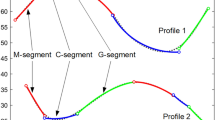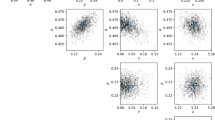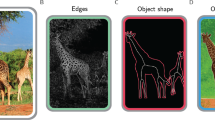Abstract
IT was recently proposed1 that biological form should be specified by an expansion of the characteristic function of the form as a weighted sum of the elements of a complete set of orthonormal functions. The method was applied to two-dimensional forms, using Walsh functions2. In the discussion it was suggested that each weight might be maximized with respect to all possible transformations of the form caused by any combination of displacements, rotations and uniform contractions or expansions. It was conjectured that this sequence of “maximal” weights constituted an unequivocal specification of the form, that is to say, two different forms would always be represented by different sequences. In the case of the Walsh functions, these weights would be real numbers lying in the interval − ½ to + ½, except for the first one which would lie in the interval 0 to 1.
This is a preview of subscription content, access via your institution
Access options
Subscribe to this journal
Receive 51 print issues and online access
$199.00 per year
only $3.90 per issue
Buy this article
- Purchase on Springer Link
- Instant access to full article PDF
Prices may be subject to local taxes which are calculated during checkout
Similar content being viewed by others
References
Meltzer, B., Searle, N. H., and Brown, R., Nature, 216, 32 (1967).
Walsh, J. L., Amer. J. Math., 45, 5 (1923).
Author information
Authors and Affiliations
Rights and permissions
About this article
Cite this article
MELTZER, B., SEARLE, N. Impotence Principle in Descriptive Morphology. Nature 217, 1289–1290 (1968). https://doi.org/10.1038/2171289a0
Received:
Issue Date:
DOI: https://doi.org/10.1038/2171289a0
Comments
By submitting a comment you agree to abide by our Terms and Community Guidelines. If you find something abusive or that does not comply with our terms or guidelines please flag it as inappropriate.



